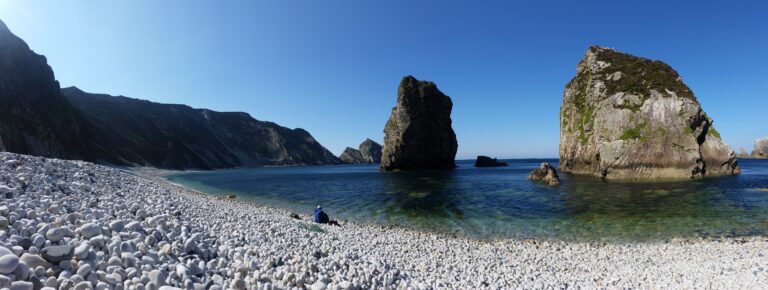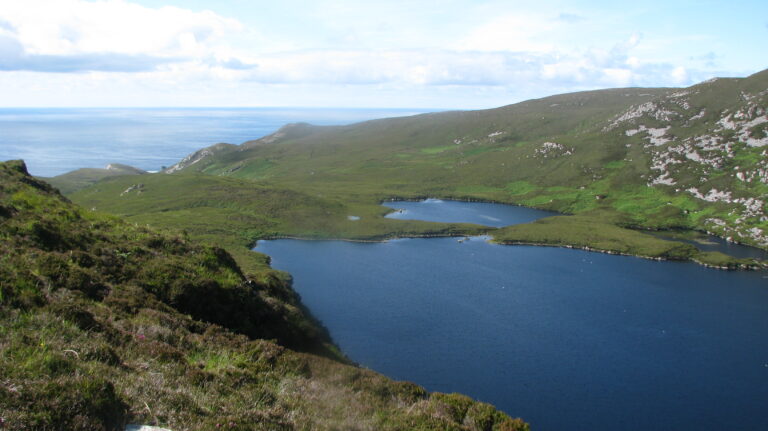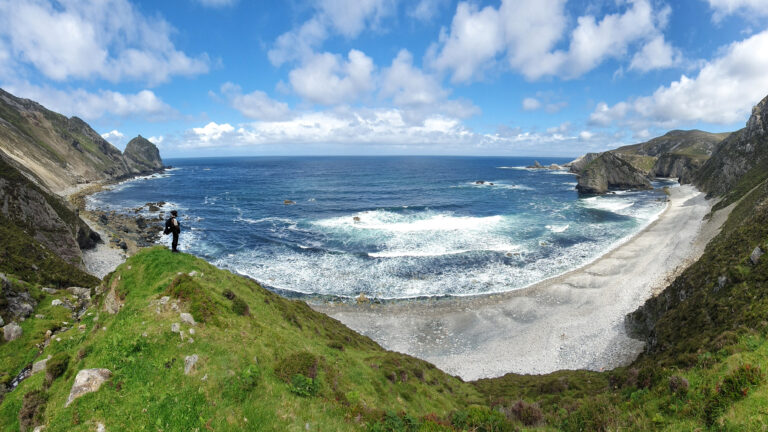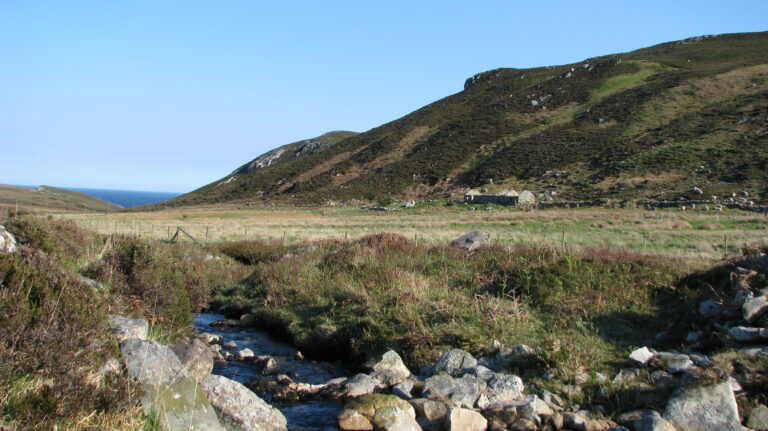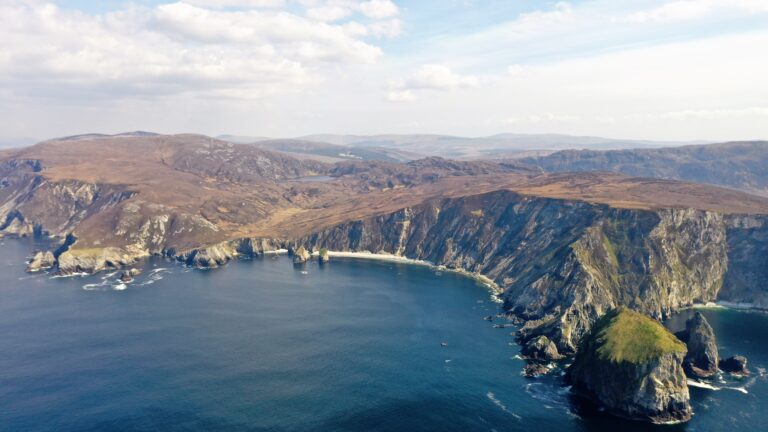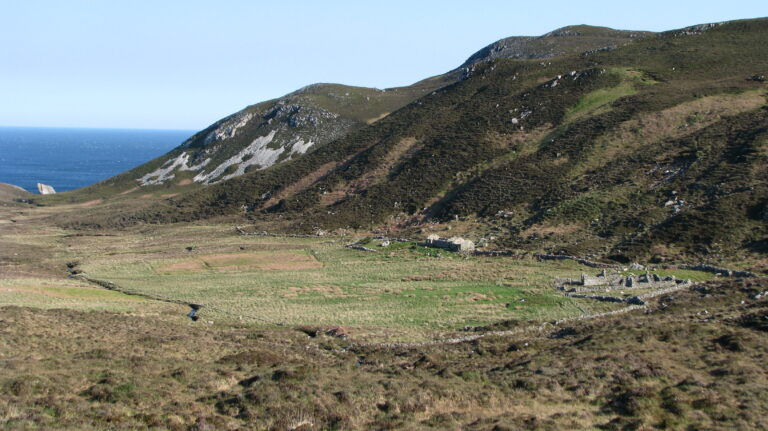The valley
The geography of the valley
This mountainous valley is at the heart of a Gaeltacht area in south-west Donegal and forms an imposing border between the parishes of Glencolmcille and Ardara. Where this valley meets the Atlantic has been described as “Ireland’s finest coastal walk” in the book Mountain and Coastal Hillways, A Walking Guide.
There is actually no road into Glenlough but rather a hard two hours walk over the moors. But when you finally reach the bay it will prove well worth the effort, as the cliffs there are on a much grander scale than the nearby and more accessible Sliabh Liag which is now a World Heritage Site.
At the head of this valley is a glacial lake surrounded by an amphitheatre of high ground. From this lake, the Glenlough River runs its short distance down to the sea where it falls in a number of waterfalls out into the natural harbour of Prince Charlie’s Cove.
Further around Glenlough Bay is the Claddagh Mór or Big Beach which is covered by large and rounded white stones which are pulled up and down the shoreline by the tides. This beach is guarded by a number of impressive seastacks including the Tormore, the largest off the coast of Ireland.
Nestled into the base of the valley is the ruins of the two cottages which sheltered successive valley owners and the three famous visitors who came for short periods to share this unique location.
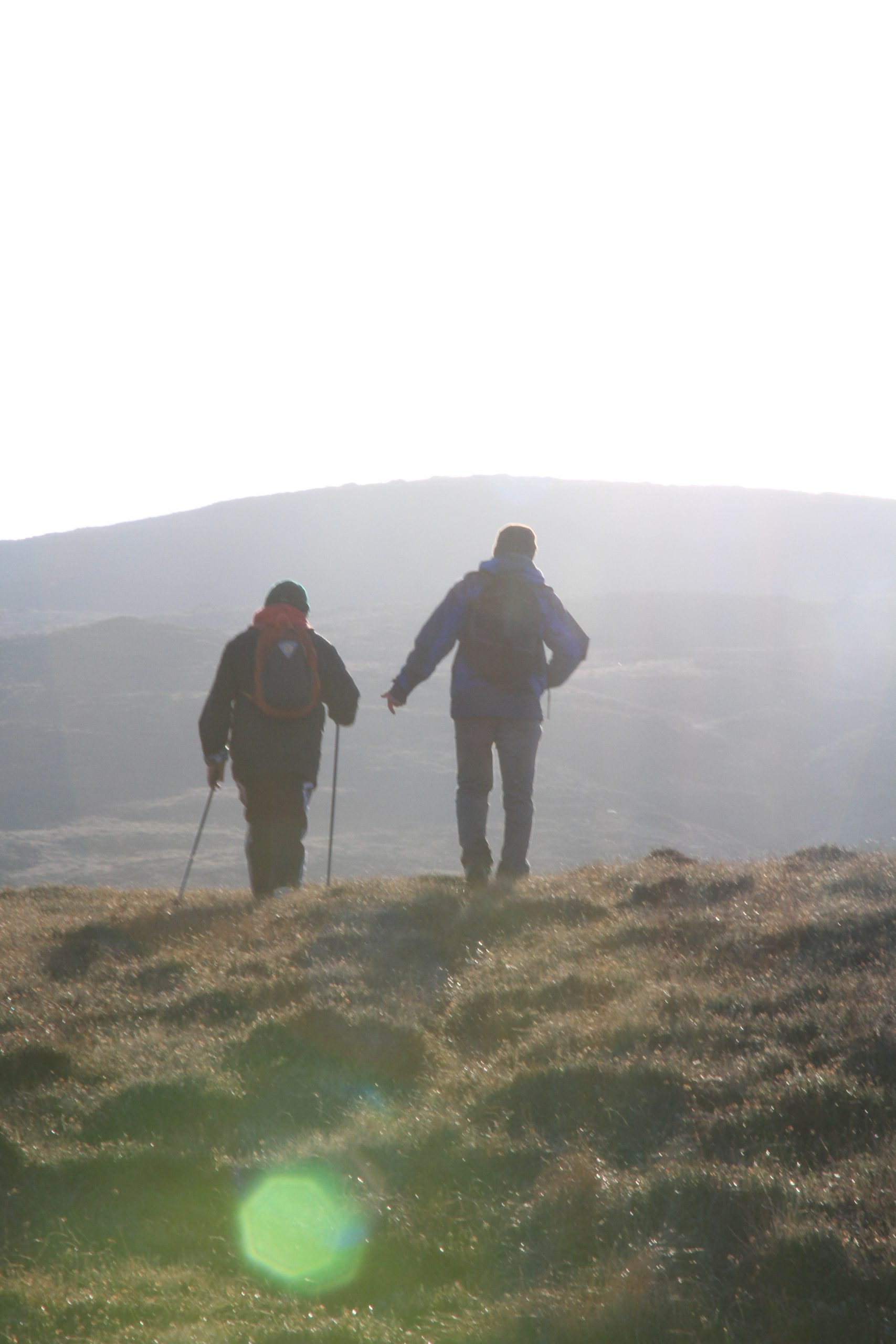
Descriptions of the valley by those who visited …
“Glenlough sloped gently towards the ocean to terminate at a steep-banked cove flanked by great masses of rock that had withstood the sea’s erosion; and these were backed by headlands that approached a thousand feet in height. It was a scene of awe-inspiring grandeur enhanced by silence broken only by the sound of sea birds and the occasional roar of surf. Few people ever came that way to shatter the prevailing mood, or gape and goggle at an artist while at work; and the Wards, by their strict avoidance of me at those times, as by their general incuriosity about my painting, showed such instinctive courtesy.”
“In Glenlough was everything; and still – by the vastness of the scene, by its prevailing quietness no more than by the occasional roar of the surf along the shore, by its solitude no less than in the natures of the few human beings who ever came that way – there was that Presence. Surely the very littleness of the one room ruin of an ancient house that came to so content us throughout the months we lived there was of itself a symbol of our reverence. One whispers in a church: if one could make a whisper visible it would be, in Glenlough, that house.”
Geoffrey Grigson, who was to accompany the young Welsh poet Dylan Thomas to Glenlough in the summer of 1935, recalled the: “valley above the Atlantic entered by no road, not even a well-defined path, over a ridge of rock, peat and heather. In this valley of Glenlough between Ardara and Killybegs, I knew a solitary farmer and his wife. A year or two before (sic), the place had been discovered by the American artist Rockwell Kent, who liked its wilderness and loneliness between mountains, or mountains and lakes, and the sea. He had concreted a donkey-shed into a sleeping-room and studio.”
